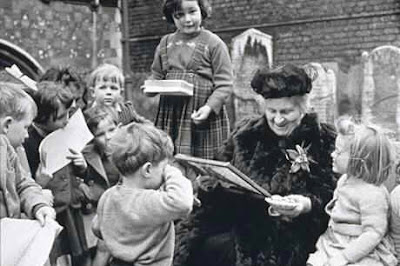Not to long ago, I was thinking about how the Montessori
philosophy of education has really morphed into a different beast over the last
few years. I feel like what sometimes gets lost in implementation is that Maria
Montessori began her work in a place far removed from today’s average preschool
environment.
It wasn’t in a fancy private school, surrounded by expensive
wooden toys.
Far from it.
Far from it.
After beginning a career in teaching special needs children,
Maria went on to work with underprivileged children from low-income families.
Without vast amounts of resources at her disposal, she made use of what she had
around her.
And that’s something I connected with when I first learned
about Montessori: the simplicity of Montessori’s work and the manner in which
she encouraged children to use their imagination.
The purpose of these toys isn’t to distract a child with
garish lights and loud noises but rather get them learning about the world
around them and the things in it. That’s
why there is so much focus on giving them things to play with that are natural
to their setting like spoons and bowls, a dustpan and broom, as well as letting
them explore through manual work like manipulating clay and design.
I guess the point I am trying to make is that you don’t need
much to do Montessori. The simplicity of this philosophy is what makes it so
appealing.


I loved this! It was encouraging to be reminded of its simplicity because Montessori has been so monetized. Sometimes I get discouraged that I can buy my son all the "right" things or send him to the Montessori school yet, but I'm going to look for more ways to do it simply. Thanks for this post!
ReplyDeleteYou are exactly right, Montessori has become very monetized but it doesn't need to be that way. Thank you for sharing your thoughts!
Delete